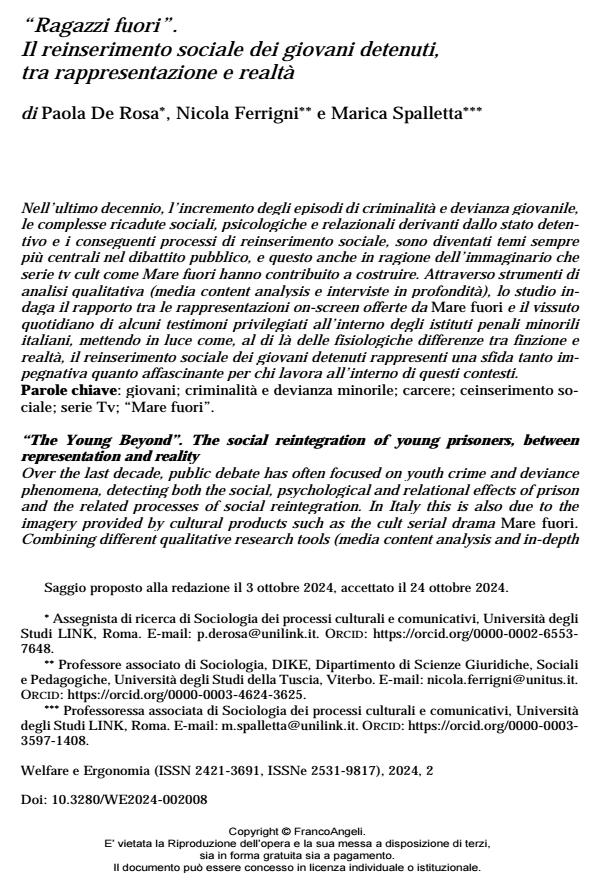“The Young Beyond”. The social reintegration of young prisoners, between representation and reality
Journal title WELFARE E ERGONOMIA
Author/s Paola De Rosa, Nicola Ferrigni, Marica Spalletta
Publishing Year 2025 Issue 2024/2
Language Italian Pages 15 P. 105-119 File size 71 KB
DOI 10.3280/WE2024-002008
DOI is like a bar code for intellectual property: to have more infomation
click here
Below, you can see the article first page
If you want to buy this article in PDF format, you can do it, following the instructions to buy download credits

FrancoAngeli is member of Publishers International Linking Association, Inc (PILA), a not-for-profit association which run the CrossRef service enabling links to and from online scholarly content.
Over the last decade, public debate has often focused on youth crime and deviance phenomena, detecting both the social, psychological and relational effects of prison and the related processes of social reintegration. In Italy this is also due to the imagery provided by cultural products such as the cult serial drama Mare fuori. Combining different qualitative research tools (media content analysis and in-depth interviews), the study investigates the relationship between on-screen representations and daily experiences of Italian youth penal institutions, highlighting how, beyond the physiological differences between fiction and reality, the social reintegration of young prisoners represents both a demanding and fascinating challenge for professionals such as psychologist, trainers, social workers, police officers.
Keywords: young adults; youth crime and deviance; prison; social reintegration; serial dramas.
Paola De Rosa, Nicola Ferrigni, Marica Spalletta, “Ragazzi fuori”. Il reinserimento sociale dei giovani detenuti, tra rappresentazione e realtà in "WELFARE E ERGONOMIA" 2/2024, pp 105-119, DOI: 10.3280/WE2024-002008